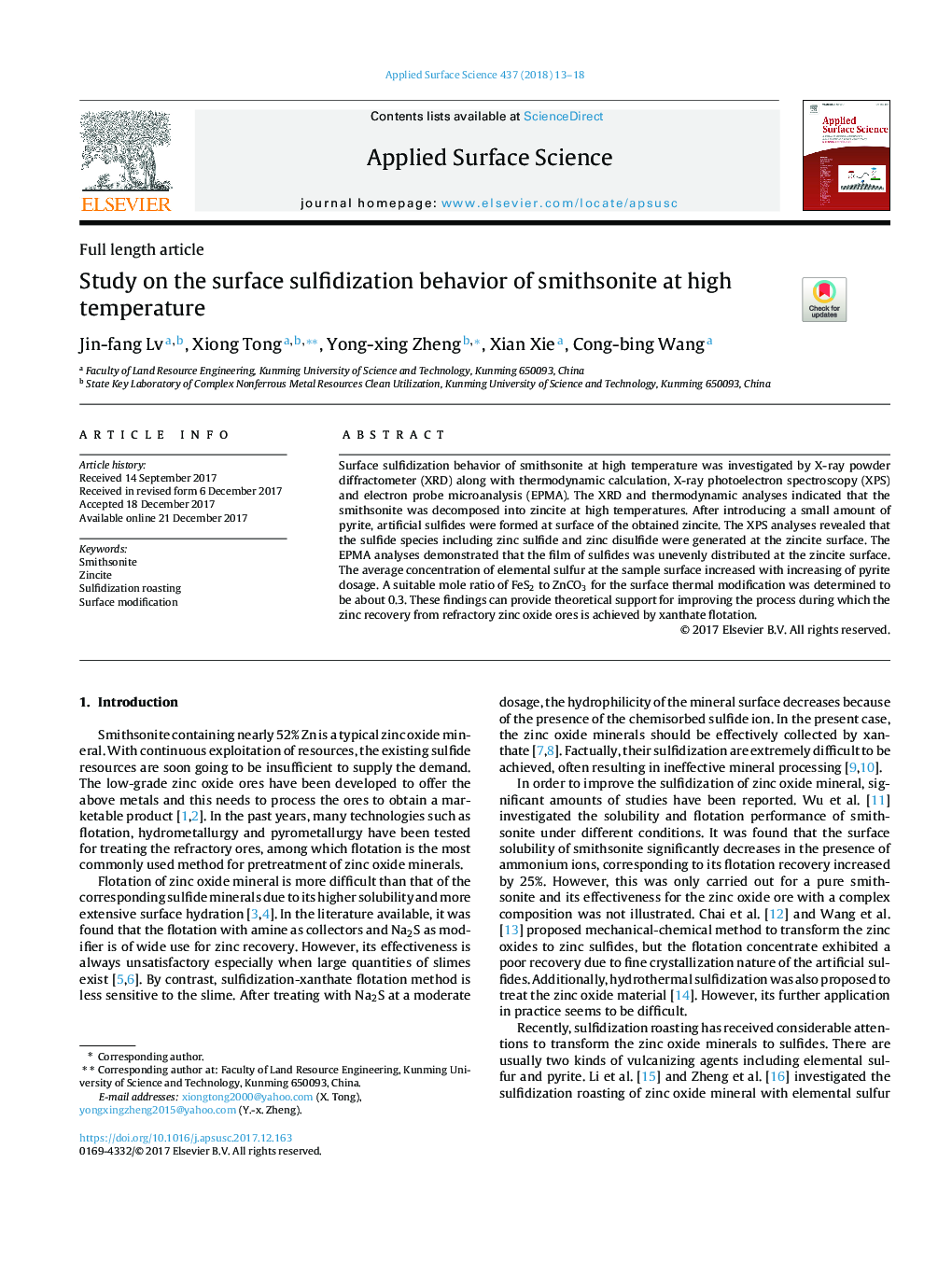| Article ID | Journal | Published Year | Pages | File Type |
|---|---|---|---|---|
| 7835542 | Applied Surface Science | 2018 | 6 Pages |
Abstract
Surface sulfidization behavior of smithsonite at high temperature was investigated by X-ray powder diffractometer (XRD) along with thermodynamic calculation, X-ray photoelectron spectroscopy (XPS) and electron probe microanalysis (EPMA). The XRD and thermodynamic analyses indicated that the smithsonite was decomposed into zincite at high temperatures. After introducing a small amount of pyrite, artificial sulfides were formed at surface of the obtained zincite. The XPS analyses revealed that the sulfide species including zinc sulfide and zinc disulfide were generated at the zincite surface. The EPMA analyses demonstrated that the film of sulfides was unevenly distributed at the zincite surface. The average concentration of elemental sulfur at the sample surface increased with increasing of pyrite dosage. A suitable mole ratio of FeS2 to ZnCO3 for the surface thermal modification was determined to be about 0.3. These findings can provide theoretical support for improving the process during which the zinc recovery from refractory zinc oxide ores is achieved by xanthate flotation.
Related Topics
Physical Sciences and Engineering
Chemistry
Physical and Theoretical Chemistry
Authors
Jin-fang Lv, Xiong Tong, Yong-xing Zheng, Xian Xie, Cong-bing Wang,
